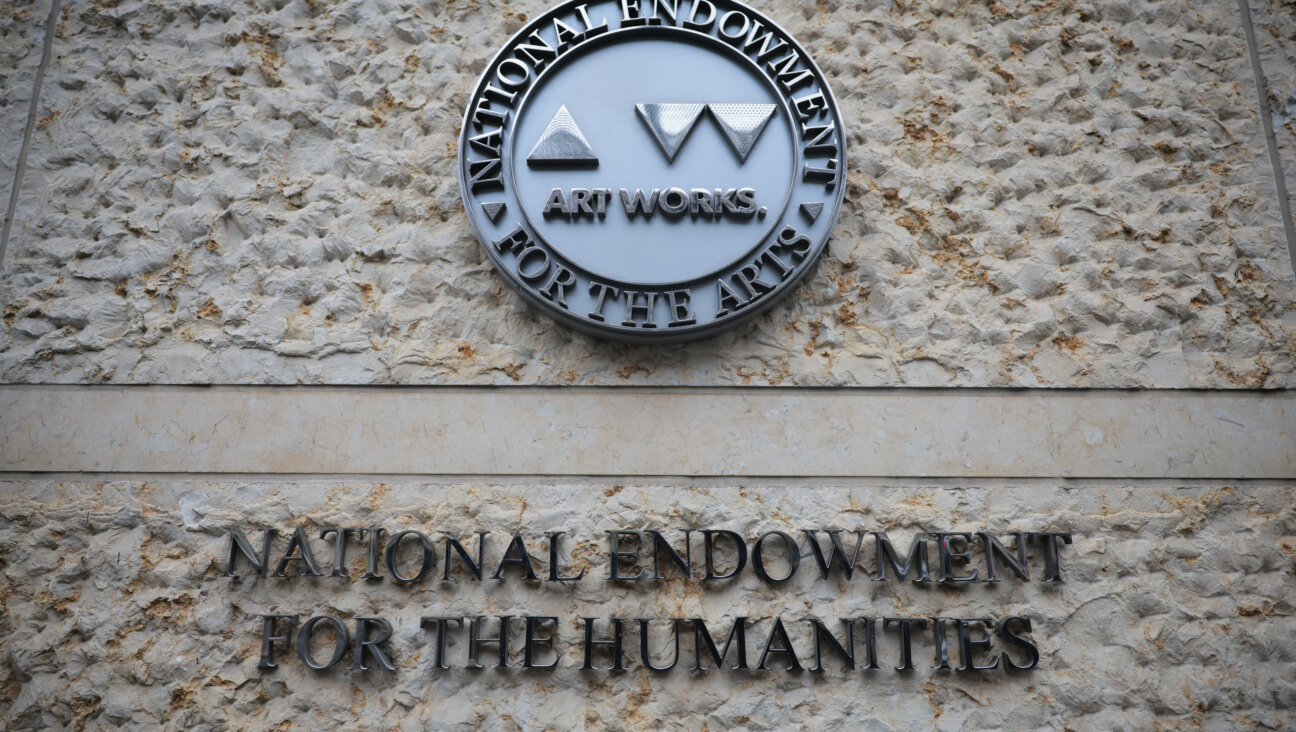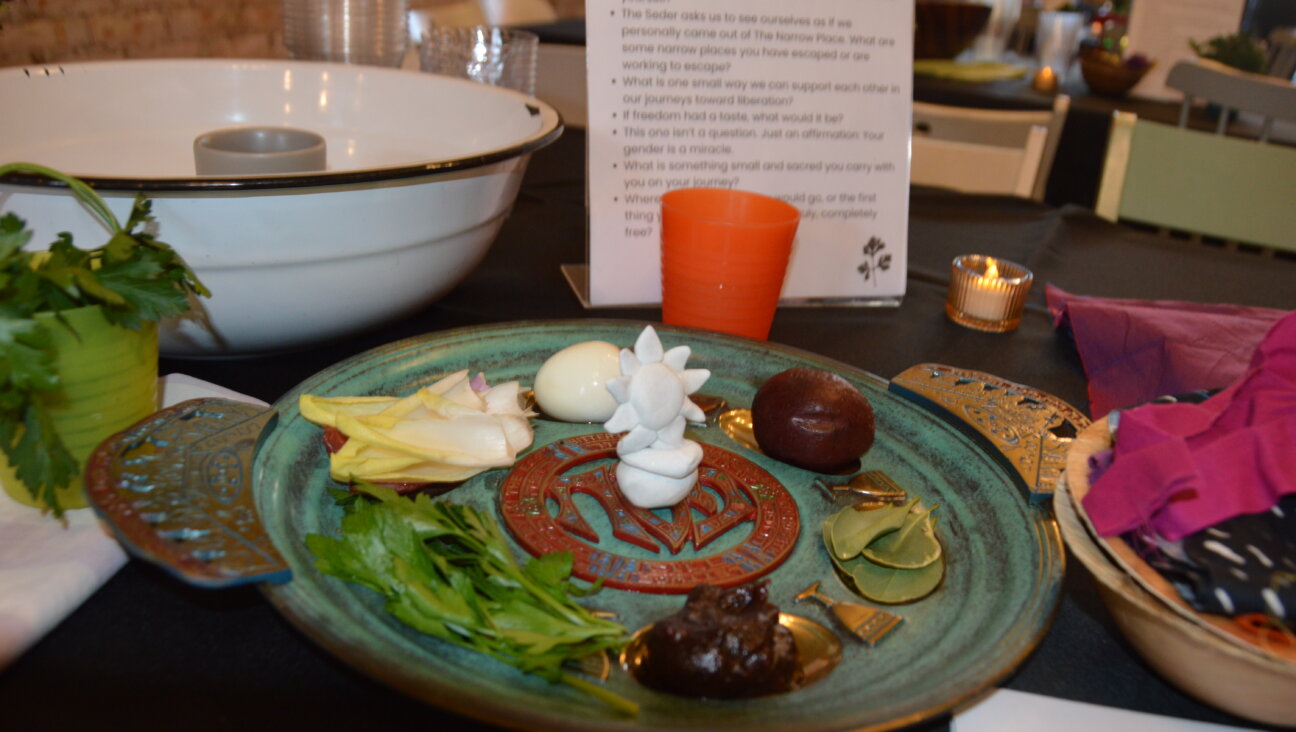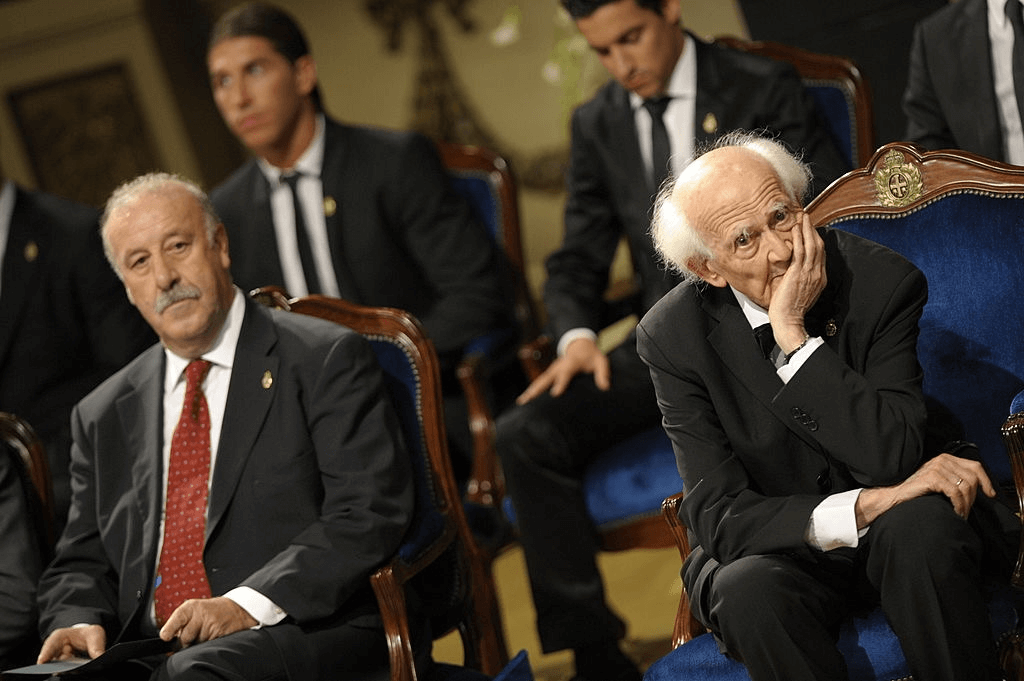Built Judaism:
Architecture has been an important way in which Jews have defined themselves within their own community, as well as the pre-eminent means of projecting Jewish identity to the gentile world. Palaces of Prayer, a new exhibit at the Angel Orensanz Foundation on New York’s Lower East Side, includes 70 superb color prints of synagogues that should convince even the most book-bound skeptic that Jews really do love to build, and have built very well when given the chance.
Palaces of Prayer presents a wide representation of work by photographer Laszlo Regos, and offers a mix of images of synagogues in the United States and his native Hungary, where he also has been working on a book about Budapest’s Opera House. Regos prefers synagogues with richly decorated and colorful interiors. Though the synagogues are empty of worshippers, the overall mood of the images is celebratory and optimistic. The American synagogues include touchstones in synagogue history from the Touro Synagogue in Newport, R.I., to expressive, and even aggressively modern, works by Frank Lloyd Wright and Minoru Yamasaki. But many lesser-known houses of worship, often quite beautiful, are included.
Regos’s personal history invigorates his images. Born to Holocaust survivors, he celebrates the rich cultural heritage of Hungarian Jews that was broken, though not entirely destroyed. This is especially true of his Hungarian images, which are primarily of 19th-century synagogues; these are not passive documents, but rather are imbued with energy that at times springs out of the camera like a released coil of hope.
With this exhibit (and the publication of a new book on American synagogues, in which many of these photos appear), Regos joins a select group of artists who have melded the informative documentation of Jewish culture with powerful artistic expression. Of this group, including pre-Holocaust photographers such as Solomon Yudovin (who worked with An-Sky), Roman Vishniac and Alter Kacyzne, the largest number has been concerned with representing people. More recent photographers such as Lawrence Salzmann, Bill Aron, Edward Serotta and Frederic Brenner are in this tradition, often combining photojournalism and portraiture with posed and even theatrical presentations in order to convey a larger conceptual meaning beyond representation.
There is a lesser tradition of quality photography of Jewish architecture. Pre-eminent are the historic views of Polish synagogues taken by Szymon Zajczyk and his team before their Holocaust deaths, and made widely known in the 1959 publication “Wooden Synagogues” by Kazmierz and Maria Piechotka.
But it is only in the last 15 years that significant work has been created that adequately celebrates the architectural aspirations and achievements of Jewish communities around the world. Well-equipped photographers have gained entry into synagogues so that the visual splendor of sanctuaries usually known only to congregants is now made public. Photographers such as Regos have produced wide-angle and detailed images in vivid color. Regos, especially, focuses on synagogue interiors, recognizing that the heart of Jewish religious, social and artistic expression is found within those walls.
Before the Holocaust, there was little color photography. Most color images of synagogues, such as postcard views, were in fact hand-tinted black-and-white images. After the Holocaust, when a few photographers (such as Chuck Fishman and Lawrence Salzmann) ventured behind the Iron Curtain, black and white still seemed the appropriate medium from an emotional and political standpoint as much as from a technical one. In the early 1990s, I, too, contributed to this mentality when I helped organize photographic surveys of Jewish heritage sites for World Monuments Fund. Although there was some excellent color work by Isaiah Wyner (Moroc-co) and Robert Lyons (Syria) included, the bulk of the documentation work always was in black and white, conveying an overall effect of temporal and spatial removal, or glimpses into some shadow world.
The 1996 exhibition of Lyon’s Syria photos was even titled (by me) “Silenced Sacred Spaces,” though the half-dozen large color views of Syrian synagogues then still in use somewhat contradicted the exhibit title (but subsequent history has proved it right). These few large color images, however, presented an alternative vision of the culture and religion of Diaspora Judaism as something vibrant and beautiful, with achievements to be valued and cherished.
Neil Folberg most triumphantly achieved this view of Diaspora culture in his color views of world synagogues published in 1995 as “And I Shall Dwell Among Them: Historic Synagogues of the World.” Through meticulous lighting and the use of long and multiple expo-
sures, Folberg transformed even shabby sanctuaries into colorful jewels. He literally turned on the lights to an unknown world. He also created a new kind of artistic product: a book of synagogue images created by a single artist, seen from a single artistic viewpoint. Ethnographers and photojournalists had done this before, but never the architecture photographers.
Looking at Regos’s magnificent photos, I certainly hope he soon will be able to follow suit. But Folberg was among the first to shoot in the newly opened Eastern Europe and former Soviet Union. He covered the world, and his photos fit together to create a fascinating overview of synagogue architecture with many fresh views of “built Judaism.” Regos’s geographic range is more restricted, and his work still lacks an overview or a cohesive narrative. His photos are beautiful, and most of the buildings are of interest, but connections between them are still left to the viewer. For now, the photos remain pre-eminent. The significance of the synagogues themselves — their history and art — is of secondary importance.
The Hungarian photos especially stand together, and they do link well with many of the American images. It is in Hungary that the most impressive Central European synagogues survive after the destruction of the Holocaust, and America, of course, was spared the Holocaust and preserves an impressive architecture collection of synagogues dating back to 1763. Thus some relationships between Europe and America are apparent.
There are telling pairings of images on the walls of the old Norfolk Street Synagogue, now the Angel Orensanz Center hosting the exhibit. Touro was built in 1763, fewer than 40 years before the synagogue in Mad, Hungary. New York’s Central Synagogue (1872) is always been compared with Budapest’s Dohany Street Synagogue (1854-59). For the first time, we can see the same views of each synagogue taken with the same camera by the same photographer (I only wish Regos had an exterior view of Central Synagogue, too).
Regos uses similar sweeping compositions to capture the interiors of the almost contemporary synagogues of Szeged, Hungary (1903), and of Shearith Israel in San Francisco (1904). The similarity of intent of these buildings testifies to the inter-connectedness of world Judaism a century ago.
Architectural historian Frank Toker has likened Henry Hornbostel’s design for Rodeph Sholem in Pittsburgh to the Budapest train station, so it is satisfying that among all the Budapest buildings, the Pittsburgh synagogue seems remarkably fresh and different — and thus American.
Hungarian synagogues such as the Dohany in Budapest, shown in its recently restored state, or the grand synagogue in Pecs, only now beginning to be restored, were built for the Neolog or Reform strain of Judaism, which dominated much of Hungary from the late 19th century and is closely related, though hardly identical, to classic American Reform Judaism. It is not surprising, then, that many synagogues that survive from Hungary resemble their contemporary American Reform counterparts in the exhibit. It is a joy to see the images of these and their Hungarian “cousins” so close together at last.
Many subsequent Reform synagogues in America, built in different styles, continue to project the same sense of presence, security, power and privilege that began in America with the construction of the great synagogues following the Civil War. In scale and grandeur, there is a link between the Dohany, which Regos’s parents attended, and the ultra-modern Temple Beth El in Bloomfield Hills, Mich., designed by Minoru Yamasaki, to which Regos and his family belong today. The enormous Temple Emanuel in New York was an intermediary stop on this development of “Cathedral Synagogues.” This exhibit links them all together.
The placement of the exhibit at the Orensanz Foundation also creates a compelling juxtaposition between a real place and these perfect, almost ideal, images. The exhibit site is the oldest purpose-built synagogue standing in New York, and one of the oldest extant synagogue buildings in America. The building was an empty wreck (but beautifully photographed around 1990 by Tria Giovan) until Angel Orensanz purchased it and began its transformation. This exhibition allows us to dwell on our own spotty record of protecting and preserving many of the buildings shown here, and many more lost forever. The exhibit’s sponsors include Eldridge Street Project and the Lower East Side Conservancy, both working hard to improve this situation.
The exhibit includes beautiful images of some of the Lower East Side survivors, such as the Eldridge Street Synagogue, the Bialystoker Synagogue, Kehila Kedosha Janina on Broome Street (which is now the subject of intensive documentation art photographer Vincent Giordano), Edath LeiIsrael, the Stanton Street Synagogues and Beth Hamedrash Hagodol. All these, with the exception the Bialystoker, still struggle to continue restoration projects.
In 1990, I organized a conference in New York, titled “The Future of Jewish Monuments.” How strange that many of the buildings we toured that year remain unrestored or incomplete today, while similar projects in countries just then opening to the West are now splendidly remade. Regos shows us a few of these: In addition to the Dohany, there is Budapest’s synagogue on Rumbach Street, an early work of Otto Wagner, and the Pava Street Synagogue, just restored to house Hungary’s Holocaust Research Center. This is one of more than 20 synagogues by the Jewish architect Lipot Baumhorn, whose masterpiece in Szeged, also shown, was restored in 1989. There are also the splendid views of the synagogue of Mad, where restoration was just completed this past May.
After viewing Regos’s photographs, I wonder whether I will now remember them better than I remember the actual places, many of which I have visited. His Dohany looks so grand, I almost forgot how drafty the actual building was. His Lower East Side synagogues appear so warm and welcoming that I forgot about the oft-present smell of damp walls. I suppose that’s why it is good to look at these images in the context of the Orensanz Foundation. The combination of sturdiness and frailty of the old building lets our sprits soar with the photos, but keeps us aware of the size and substance of what makes these buildings real.
Palaces of Prayer, sponsored by the Angel Orensanz Foundation, Eldridge Street Project and the Lower East Side Conservancy. At the Angel Orensanz Center, October 29-November 19, 2004, 172 Norfolk Street, New York, NY 10002. For general inquires, e-mail us at [email protected] or call (212) 529-7194.
The Forward is free to read, but it isn’t free to produce

I hope you appreciated this article. Before you go, I’d like to ask you to please support the Forward.
Now more than ever, American Jews need independent news they can trust, with reporting driven by truth, not ideology. We serve you, not any ideological agenda.
At a time when other newsrooms are closing or cutting back, the Forward has removed its paywall and invested additional resources to report on the ground from Israel and around the U.S. on the impact of the war, rising antisemitism and polarized discourse.
This is a great time to support independent Jewish journalism you rely on. Make a Passover gift today!
— Rachel Fishman Feddersen, Publisher and CEO
Most Popular
- 1

Opinion My Jewish moms group ousted me because I work for J Street. Is this what communal life has come to?
- 2

Fast Forward Suspected arsonist intended to beat Gov. Josh Shapiro with a sledgehammer, investigators say
- 3

Fast Forward How Coke’s Passover recipe sparked an antisemitic conspiracy theory
- 4

Politics Meet America’s potential first Jewish second family: Josh Shapiro, Lori, and their 4 kids
In Case You Missed It
-
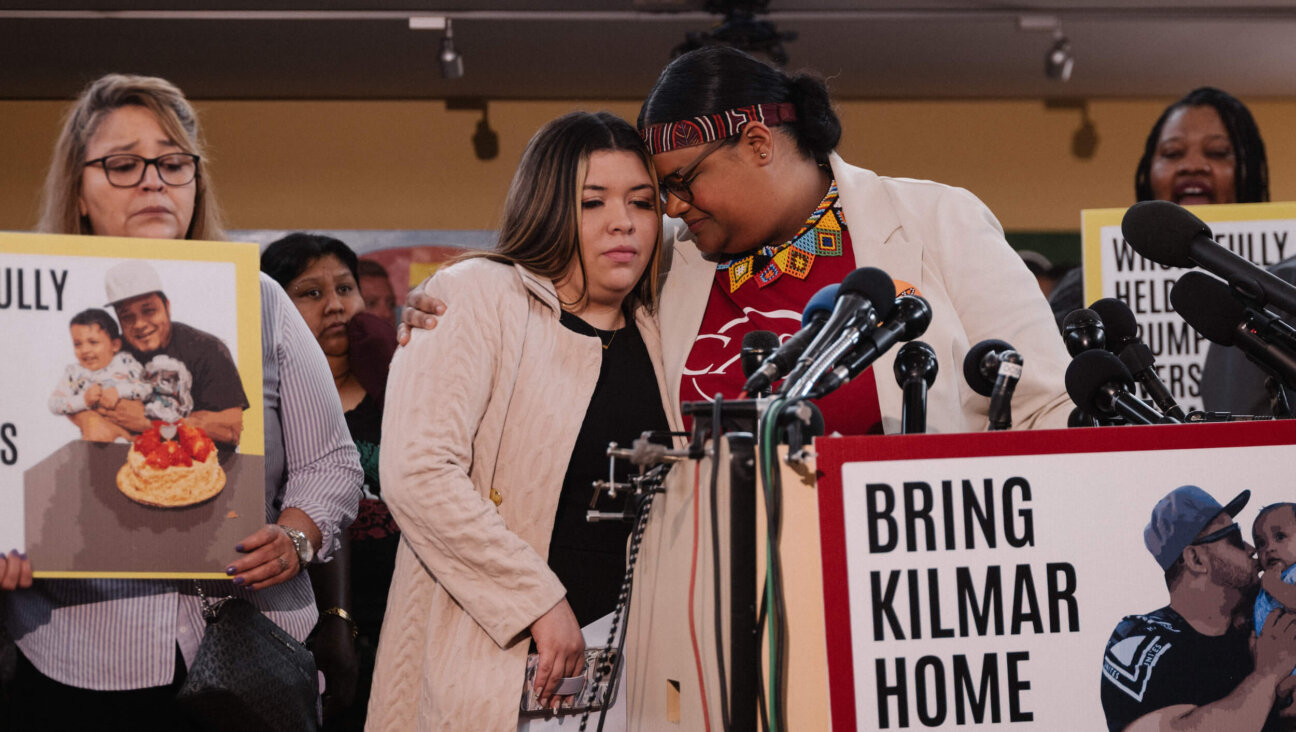
Opinion This Nazi-era story shows why Trump won’t fix a terrifying deportation mistake
-

Opinion I operate a small Judaica business. Trump’s tariffs are going to squelch Jewish innovation.
-
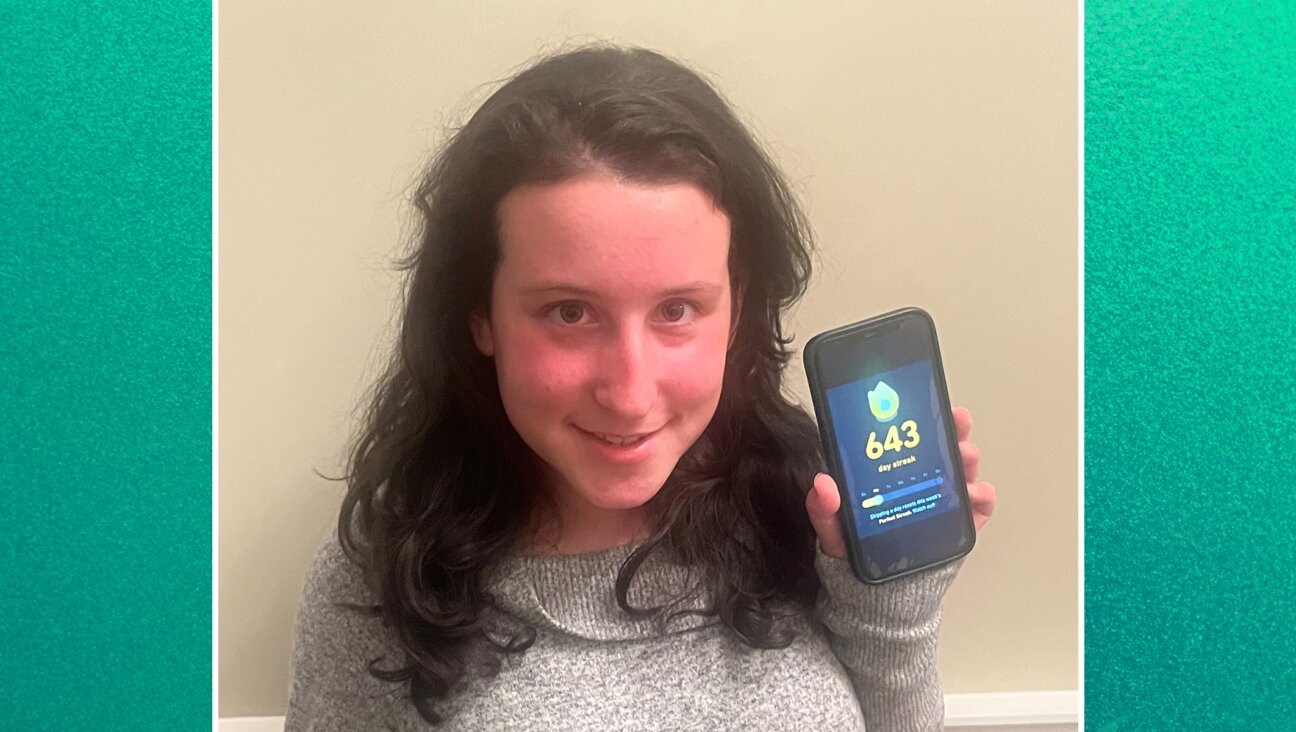
Fast Forward Language apps are putting Hebrew school in teens’ back pockets. But do they work?
-
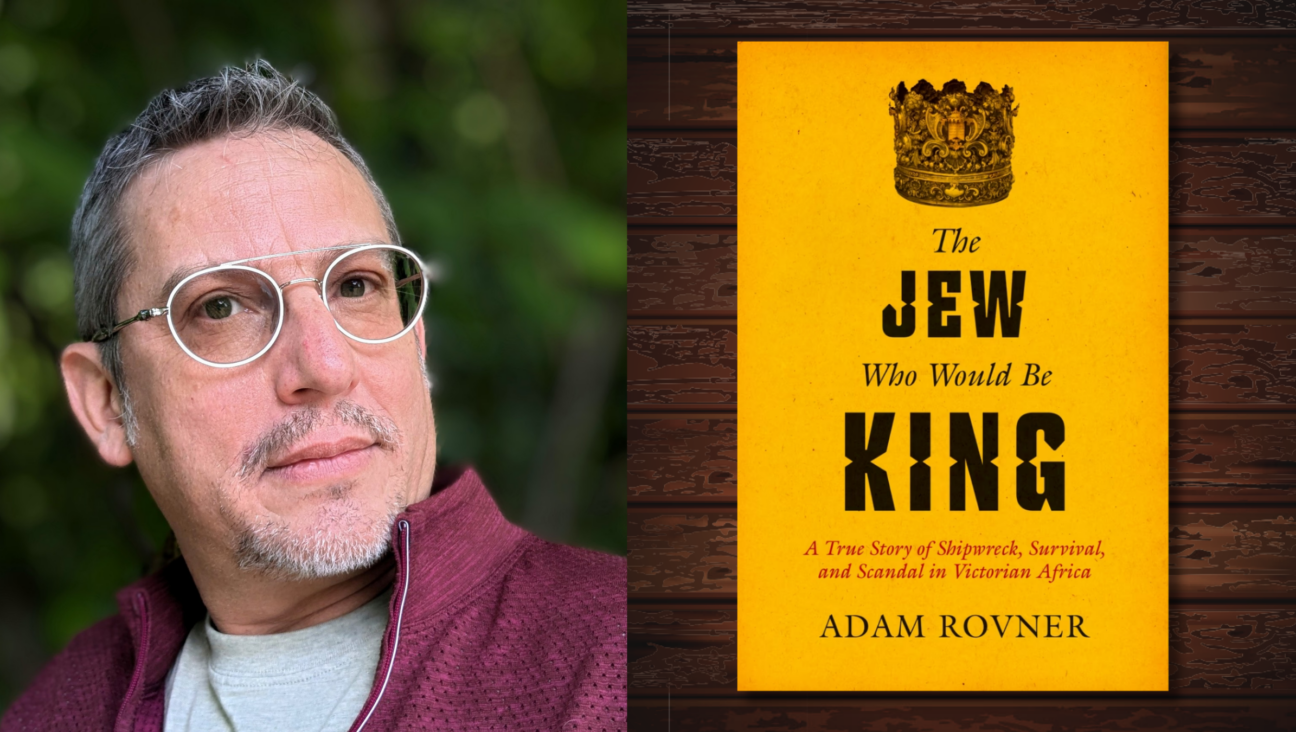
Books How a Jewish boy from Canterbury became a Zulu chieftain
-
Shop the Forward Store
100% of profits support our journalism
Republish This Story
Please read before republishing
We’re happy to make this story available to republish for free, unless it originated with JTA, Haaretz or another publication (as indicated on the article) and as long as you follow our guidelines.
You must comply with the following:
- Credit the Forward
- Retain our pixel
- Preserve our canonical link in Google search
- Add a noindex tag in Google search
See our full guidelines for more information, and this guide for detail about canonical URLs.
To republish, copy the HTML by clicking on the yellow button to the right; it includes our tracking pixel, all paragraph styles and hyperlinks, the author byline and credit to the Forward. It does not include images; to avoid copyright violations, you must add them manually, following our guidelines. Please email us at [email protected], subject line “republish,” with any questions or to let us know what stories you’re picking up.








